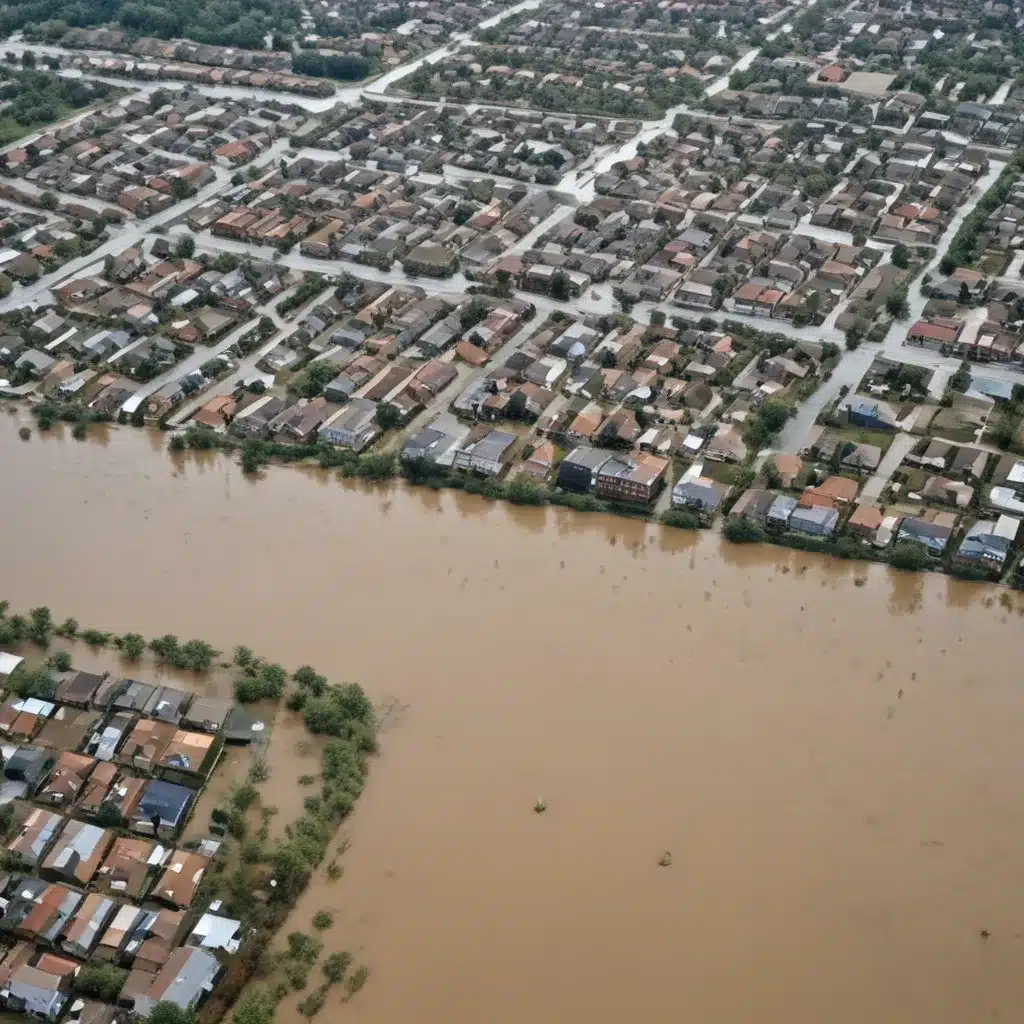
As an experienced flood control specialist, I’ve witnessed first-hand how emerging technologies are revolutionizing the way we approach flood risk management. One particularly promising avenue is the intersection of citizen science and collaborative flood monitoring. By harnessing the power of engaged communities, we can enhance our understanding of flood hazards and elevate flood resilience across the board.
Flood Risk Assessment: The Foundation for Action
Effective flood control begins with a thorough assessment of the risk. Flood hazard mapping lays the groundwork, identifying areas prone to inundation based on historical data, hydrological models, and topographical analyses. Combining this with vulnerability analysis – examining the potential impact on people, infrastructure, and assets – and exposure estimation allows us to generate comprehensive flood risk assessments.
These risk assessments are crucial for guiding mitigation strategies, whether structural measures like levees, dams, and floodwalls or non-structural approaches such as land use planning, building codes, and early warning systems. But traditional data collection methods can be time-consuming and resource-intensive, often leaving critical knowledge gaps, especially in remote or underserved regions.
Citizen Science: Empowering Community Engagement
This is where citizen science comes into play. By engaging local communities in the data collection process, we can harness the power of crowdsourced observations to fill these gaps and create a more holistic understanding of flood risk. Programs like the GLOBE Observer app empower everyday citizens to capture standardized land cover images from multiple angles, providing a wealth of information that can be used to refine land cover mapping and identify flood-prone areas.
The beauty of this approach lies in its scalability and localized relevance. As more citizens contribute their observations, we can build up a rich, spatially distributed dataset that reflects the unique characteristics of each community. This real-time flood mapping can aid in early warning systems, disaster response, and long-term resilience planning.
Storm Water Management: Harnessing Citizen Science
Effective storm water management is another crucial component of flood control, and citizen science can play a pivotal role here as well. By involving residents in monitoring and reporting on the performance of local drainage systems, we can identify problem areas, assess the impact of green infrastructure, and optimize runoff reduction techniques.
Imagine a community-driven initiative where volunteers track water levels, identify blockages, and provide firsthand accounts of flooding events. This collaborative flood monitoring not only enhances our understanding of the system’s functionality but also fosters a sense of shared ownership and responsibility among residents.
Emergency Response and Recovery: Citizen Science in Action
When disaster strikes, citizen science can be a powerful tool for emergency response and recovery efforts. During flood events, volunteers can use their smartphones to report on water levels, document damage, and assist in search and rescue operations. This real-time data can be invaluable for guiding evacuation plans, allocating resources, and coordinating relief efforts.
In the aftermath, citizen science can play a crucial role in the post-flood recovery process. By documenting the extent and impacts of floods, communities can better advocate for resources and support, while also informing long-term resilience strategies.
Building Resilience: Citizen Science and Flood Risk Communication
Effective flood risk communication is essential for building community resilience. Citizen science can enhance these efforts by involving residents in the data collection and analysis process, fostering a deeper understanding of local flood hazards and vulnerabilities.
Public awareness campaigns, community engagement strategies, and flood risk information dissemination can all benefit from the insights gleaned through citizen science initiatives. When community members actively participate in mapping flood risks and monitoring mitigation efforts, they become empowered stakeholders in the process, better equipped to make informed decisions and advocate for their needs.
Climate Change Adaptation: Citizen Science for the Future
As we grapple with the growing threat of climate change, citizen science can play a pivotal role in adapting to future flood scenarios. By collecting data on changing weather patterns, precipitation trends, and shifting flood dynamics, we can inform models and simulations that help us plan for the challenges ahead.
Citizen science can also support the development of resilient infrastructure and adaptive management approaches. When communities are involved in monitoring the performance of flood control systems, they can provide invaluable feedback on areas for improvement and innovative solutions that meet their unique needs.
Policy and Governance: Integrating Citizen Science
Effective flood risk management requires a holistic, collaborative approach that spans policy, governance, and institutional coordination. Citizen science can play a crucial role in this landscape, providing policymakers and decision-makers with robust, community-driven data to inform flood risk management policies and transboundary cooperation.
By leveraging the insights gleaned from citizen science initiatives, we can develop more targeted, equitable, and responsive flood control strategies that address the needs of diverse communities. This integrated approach to flood risk management can enhance overall resilience and better prepare us for the challenges ahead.
Conclusion: The Power of Collaboration
As we navigate the complexities of flood control and water management, the integration of citizen science holds immense promise. By empowering communities to actively participate in data collection, monitoring, and risk assessment, we can create a more comprehensive, resilient, and adaptable approach to flood risk management.
The future of flood control lies in the collaborative efforts of experts, policymakers, and engaged citizens. By harnessing the power of emerging technologies and the passion of local communities, we can build a more flood-resilient world, one step at a time. To learn more about innovative flood control strategies and the latest advancements in the field, I encourage you to visit Flood Control 2015.
Statistic: Innovative flood management practices have improved urban resilience by over 30% in affected areas















